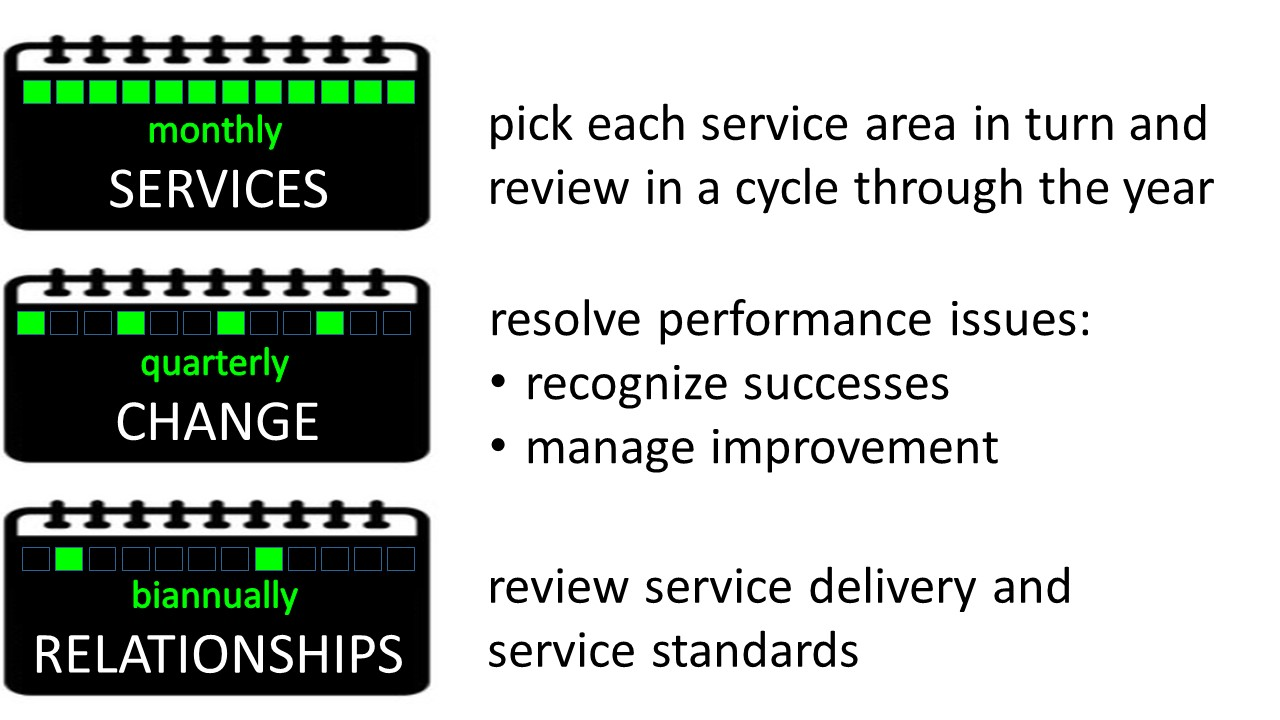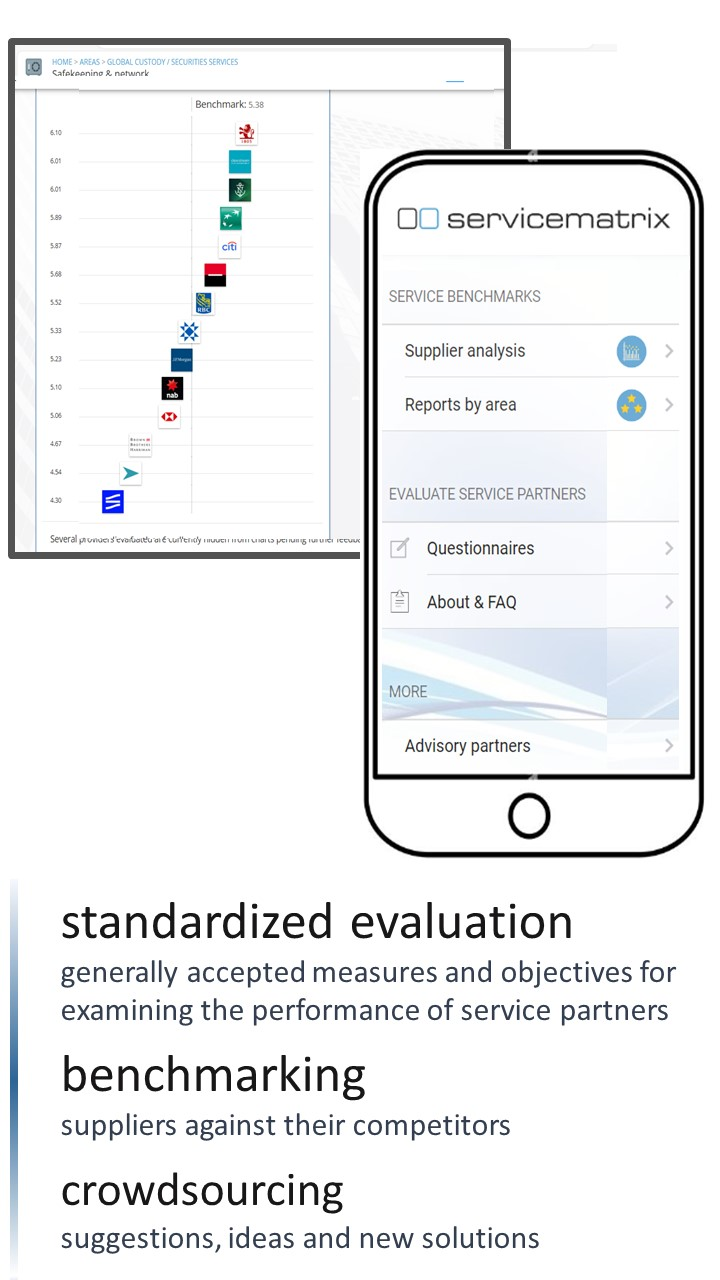
Supplier management has a significant impact on business performance, given heavy reliance on an array of vendors which can play a critical role in boosting efficiency, service quality and risk mitigation. If all goes well, their services provide you with a competitive edge – boosting value and growth. If not, they can be a fundamental drag on realising your firm's strategic ambitions – with value leakage, faltering service quality and exposure to third-party risk.
Avoiding poor outcomes and getting the most out of supplier relationships requires a robust vendor governance framework. Encompassing the full breadth and depth of services, this defines process objectives and entails a rigorous assessment and monitoring programme. It must encompass all contracted strategic service partners and should extend to standardized benchmarking of their services against their competitors and crowdsourcing of suggestions, ideas and new solutions.
A systematic approach is essential
The simplistic perspective of a transactional customer-supplier relationship – typically involving simple scorecards, time spent in spreadsheets and a 'suggestions box' attitude of raising ad hoc complaints and perhaps dictating changes – does little to nothing in helping either party grow.
To maximize value and minimize risk from strategic vendors, a systematic holistic approach to managing the relationships is essential and key to business performance and growth. You must adopt a partnership approach and ensure that the vendor is fully onboard in taking the same stance. This has each party invested in driving change and thus building on the relationship and serving their long-term mutual interests. It empowers the supplier's staff and fosters a shared responsibility for better outcomes. As a consequence, the parties can engage in healthy collaboration which in itself strengthens the partnership and leads to acceptance of where change is required and to more innovative and resilient solutions.
A best-in-class formalized vendor governance framework helps you achieve further value creation through attaining and then retaining the status of ‘customer of choice' for suppliers, bringing access to advantageous pricing and to top supplier talent and leadership. It also generates innovation, focusing in-house resources and those of contracted vendors and potential vendors on brainstorming, crowdsourcing and innovating new ideas.
Set clear expectations
It's crucial to establish clear expectations against which performance is to be measured. These will comprise KPIs for quantitative matters and service benchmarks for the important qualitative aspects.
You should adopt generally accepted measures and objectives and, when varying from these, it is critical to gain the consent of vendors.
Just as in our personal relationships, a shared understanding of each other's expectations, clear and constructive dialogue, and an empathetic and respectful nature are essential for vendor relationships to grow and flourish.
Structure your evaluation and feedback
Feedback should be structured, timely and comprehensive, framing the entire experience – the good, the bad and the ugly. Where there is a rich tapestry of complex services, it may be best to focus on each service area in turn at discrete intervals to keep the process palatable and fresh – perhaps using this three-pronged approach to driving value realization and growth through management of services, change and relationships:
Build trust and grow the partnership
When providing feedback to service partners, point out their strengths. Drill down to the specific aspects which require attention and work together to agree action forward. Be sure to circulate back to recognize improvement where prior issues of concern have been rectified.
A healthy feedback loop of communicating the positives as well as the negatives is essential to building trust and achieving continuous improvement. Make it about driving growth for both parties through boosting quality, mitigating risk and reducing operating costs.
This site, like many others, uses small files called cookies to customize your experience. Cookies appear to be blocked on this browser. Please consider allowing cookies so that you can enjoy more content across fundservices.net.
How do I enable cookies in my browser?
Internet Explorer
1. Click the Tools button (or press ALT and T on the keyboard), and then click Internet Options.
2. Click the Privacy tab
3. Move the slider away from 'Block all cookies' to a setting you're comfortable with.
Firefox
1. At the top of the Firefox window, click on the Tools menu and select Options...
2. Select the Privacy panel.
3. Set Firefox will: to Use custom settings for history.
4. Make sure Accept cookies from sites is selected.
Safari Browser
1. Click Safari icon in Menu Bar
2. Click Preferences (gear icon)
3. Click Security icon
4. Accept cookies: select Radio button "only from sites I visit"
Chrome
1. Click the menu icon to the right of the address bar (looks like 3 lines)
2. Click Settings
3. Click the "Show advanced settings" tab at the bottom
4. Click the "Content settings..." button in the Privacy section
5. At the top under Cookies make sure it is set to "Allow local data to be set (recommended)"
Opera
1. Click the red O button in the upper left hand corner
2. Select Settings -> Preferences
3. Select the Advanced Tab
4. Select Cookies in the list on the left side
5. Set it to "Accept cookies" or "Accept cookies only from the sites I visit"
6. Click OK
Supplier management has a significant impact on business performance, given heavy reliance on an array of vendors which can play a critical role in boosting efficiency, service quality and risk mitigation. If all goes well, their services provide you with a competitive edge – boosting value and growth. If not, they can be a fundamental drag on realising your firm's strategic ambitions – with value leakage, faltering service quality and exposure to third-party risk.
Avoiding poor outcomes and getting the most out of supplier relationships requires a robust vendor governance framework. Encompassing the full breadth and depth of services, this defines process objectives and entails a rigorous assessment and monitoring programme. It must encompass all contracted strategic service partners and should extend to standardized benchmarking of their services against their competitors and crowdsourcing of suggestions, ideas and new solutions.
A systematic approach is essential
The simplistic perspective of a transactional customer-supplier relationship – typically involving simple scorecards, time spent in spreadsheets and a 'suggestions box' attitude of raising ad hoc complaints and perhaps dictating changes – does little to nothing in helping either party grow.
To maximize value and minimize risk from strategic vendors, a systematic holistic approach to managing the relationships is essential and key to business performance and growth. You must adopt a partnership approach and ensure that the vendor is fully onboard in taking the same stance. This has each party invested in driving change and thus building on the relationship and serving their long-term mutual interests. It empowers the supplier's staff and fosters a shared responsibility for better outcomes. As a consequence, the parties can engage in healthy collaboration which in itself strengthens the partnership and leads to acceptance of where change is required and to more innovative and resilient solutions.
A best-in-class formalized vendor governance framework helps you achieve further value creation through attaining and then retaining the status of ‘customer of choice' for suppliers, bringing access to advantageous pricing and to top supplier talent and leadership. It also generates innovation, focusing in-house resources and those of contracted vendors and potential vendors on brainstorming, crowdsourcing and innovating new ideas.
Set clear expectations
It's crucial to establish clear expectations against which performance is to be measured. These will comprise KPIs for quantitative matters and service benchmarks for the important qualitative aspects.
You should adopt generally accepted measures and objectives and, when varying from these, it is critical to gain the consent of vendors.
Just as in our personal relationships, a shared understanding of each other's expectations, clear and constructive dialogue, and an empathetic and respectful nature are essential for vendor relationships to grow and flourish.
Structure your evaluation and feedback
Feedback should be structured, timely and comprehensive, framing the entire experience – the good, the bad and the ugly. Where there is a rich tapestry of complex services, it may be best to focus on each service area in turn at discrete intervals to keep the process palatable and fresh – perhaps using this three-pronged approach to driving value realization and growth through management of services, change and relationships:
Build trust and grow the partnership
When providing feedback to service partners, point out their strengths. Drill down to the specific aspects which require attention and work together to agree action forward. Be sure to circulate back to recognize improvement where prior issues of concern have been rectified.
A healthy feedback loop of communicating the positives as well as the negatives is essential to building trust and achieving continuous improvement. Make it about driving growth for both parties through boosting quality, mitigating risk and reducing operating costs.
